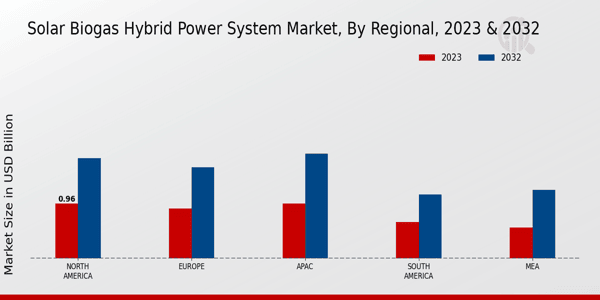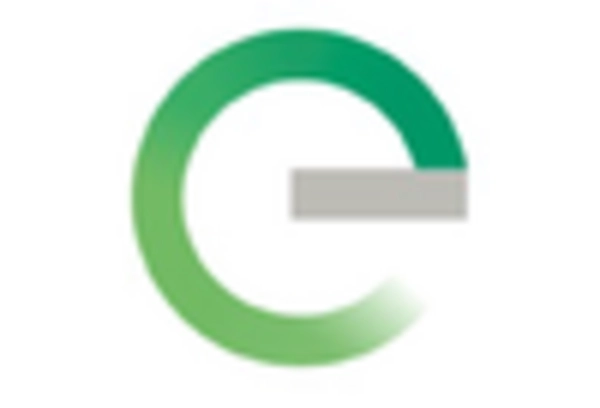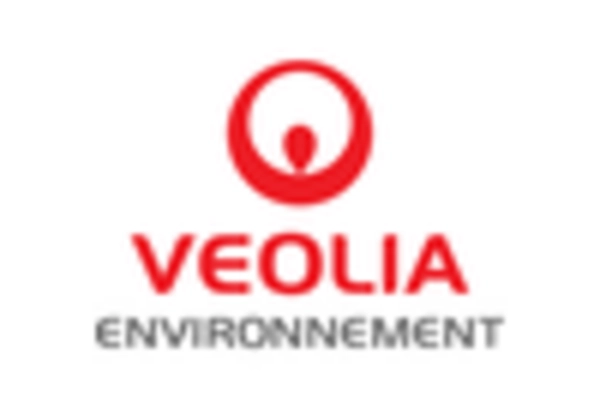Increasing Energy Demand
The Solar Biogas Hybrid Power System Market is experiencing a surge in energy demand, driven by urbanization and industrial growth. As populations expand, the need for reliable and sustainable energy sources becomes paramount. This hybrid system, which combines solar energy with biogas, offers a dual approach to meet energy needs. According to recent data, energy consumption is projected to rise by approximately 30 percent by 2030, necessitating innovative solutions. The integration of solar and biogas technologies not only enhances energy security but also reduces dependency on fossil fuels, aligning with global sustainability goals. This increasing demand for energy is likely to propel the Solar Biogas Hybrid Power System Market forward, as stakeholders seek efficient and eco-friendly alternatives.
Technological Innovations
Technological advancements play a crucial role in shaping the Solar Biogas Hybrid Power System Market. Innovations in solar panel efficiency and biogas production technologies are enhancing the viability and performance of hybrid systems. For instance, the development of high-efficiency solar cells has improved energy capture, while advancements in anaerobic digestion processes have increased biogas yield. These innovations not only lower operational costs but also enhance the overall efficiency of energy production. Market data suggests that the efficiency of solar panels has improved by over 20 percent in recent years, making them more competitive. As technology continues to evolve, the Solar Biogas Hybrid Power System Market is likely to benefit from enhanced performance and reduced costs, attracting more investments and adoption.
Environmental Sustainability
The Solar Biogas Hybrid Power System Market is significantly influenced by the growing emphasis on environmental sustainability. As climate change concerns escalate, there is a pressing need for cleaner energy solutions. The hybrid system effectively utilizes renewable resources, thereby minimizing greenhouse gas emissions. Data indicates that the energy sector is responsible for nearly 70 percent of global emissions, highlighting the urgency for transition to sustainable practices. By harnessing solar power and biogas, this system not only contributes to reducing carbon footprints but also promotes waste management through biogas production. The increasing awareness and regulatory frameworks surrounding environmental sustainability are likely to drive the adoption of Solar Biogas Hybrid Power Systems, positioning the industry as a key player in the transition to a low-carbon economy.
Rural Electrification Efforts
Rural electrification initiatives are significantly impacting the Solar Biogas Hybrid Power System Market. Many rural areas lack access to reliable electricity, creating an urgent need for sustainable energy solutions. The hybrid system, which combines solar and biogas, presents an effective solution for these regions, providing a decentralized energy source that can be implemented with relative ease. Data indicates that approximately 1 billion people still live without electricity, underscoring the potential market for hybrid systems. By addressing energy access challenges, the Solar Biogas Hybrid Power System Market can play a vital role in improving living standards and fostering economic development in rural communities. This focus on rural electrification is likely to drive demand for hybrid power systems, as stakeholders seek to bridge the energy gap.
Government Incentives and Policies
Government support is a pivotal driver for the Solar Biogas Hybrid Power System Market. Various countries are implementing policies and incentives to promote renewable energy adoption. These initiatives often include tax credits, grants, and subsidies aimed at reducing the financial burden on consumers and businesses. For example, some regions offer feed-in tariffs for energy produced from hybrid systems, ensuring a stable revenue stream for investors. Such supportive measures are crucial in fostering a conducive environment for the growth of the Solar Biogas Hybrid Power System Market. As governments increasingly recognize the importance of transitioning to renewable energy, the likelihood of enhanced support and favorable policies is expected to drive market expansion.


















Leave a Comment